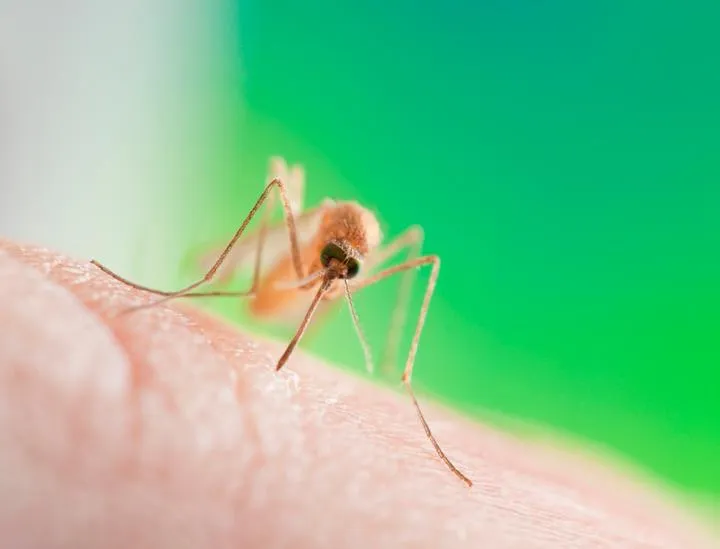How Parasites Became So Popular
A new study finds that parasitism evolved independently 223 times. But that number is actually surprisingly low
/https://tf-cmsv2-smithsonianmag-media.s3.amazonaws.com/filer/c1/56/c15696c2-6060-4b56-ad24-aae6429fafb2/schistosoma_20041-300.jpg)
The blood fluke may be the ultimate parasite. This ingenious flatworm comes of age inside a tiny snail host before entering its real host—humans—directly through the skin and burrowing into the bloodstream. The evolution of parasitism, however, is no fluke: Of the 7.7 million known animal species on Earth, up to half are parasites. Now, new research finds that this lifestyle was so successful that it evolved independently at least 223 times.
This is quite a gain on previous studies, which estimated that parasitism evolved only around 60 times. Yet while the new number sounds impressive, the authors of the study, published this week in Biology Letters, point out that the new figure is still surprisingly low considering the total number of species that prefer the moocher lifestyle. It appears that rather than evolve many times, parasitism has instead exploded on a few occasions, with the vast majority of parasites belonging to just 10 lineages.
As Armand Kuris, a zoologist at the University of California, Santa Barbara and senior author of the study, says: “Parasitism is such an important consumer strategy, yet it is clearly very difficult to evolve from a non-parasitic origin.” And as relatively rare as the shift from non-parasitism to parasitism may be, the authors also discovered that the opposite was even rarer. That is: once a species goes parasite, it doesn’t go back.
So how did these bloodsuckers become so bountiful? The answer likely has to do with the wealth of available opportunities they had to branch out, habitat-wise. For a parasite, every animal on earth represents a potential place to live, and within each of those animated habitats exists a surplus of additional microhabitats to colonize. Parasites excel at specialization: Tapeworm communities vary depending on which section of a shark’s gut is in question; different species of bird lice clings to different feather types; one fish parasite may take the top of its host’s gills, while another takes the bottom.
Kuris and his doctoral student, Sara Weinstein, arrived at these findings after undertaking a lengthy 5-year-long literature search. They combed through over 100 years’ worth of studies, focusing on the evolutionary relationships between each parasitic group and species. They took the term parasite seriously, defining parasites as only animals that both live with and feed from their hosts. Mosquitoes didn’t make the cut because they don’t occupy the animals they bite, for example; brood parasites like cuckoo birds were excluded because they don’t feed directly on their unsuspecting foster parents.

The final figure that Weinstein and Kuris arrived at—223 distinct evolutionary events—will likely shift again with further research. That’s because several groups including mites, flies, turbellarian flatworms and copepods (a group of small crustaceans) are so poorly studied that there are likely additional evolutionary events that the researchers did not detect.
“We parasitologists tend to like our worms,” Weinstein says. “Obscure groups that are hard to get to and not applicable to medical research tend to get left out.”
Still, their work represents an important step in what has been a long debate over the evolutionarily enigmatic origins of parasitism. “Weinstein and Kuris show how answers await in existing data for those willing to sift through them,” says Kevin Lafferty, a senior ecologist with the U.S. Geological Survey who was not involved in the research. “This careful work changes how we see parasitism and evolution.”
The research also puts to rest a long-held theory that parasitism is one of nature’s dead-ends—a lifestyle that increases the odds of a species’ extinction due to over-specialization and a precarious dependence on hosts. The researchers compared a quarter of the parasitic species included in the study with those species’ closest known free-living relatives. Their analysis revealed no difference in diversity between the two groups. In other words, both the parasitic and free-living species were equally “successful” when it came to branching out and surviving.
Not every instance of parasitic evolution leads to an explosion of new species. Chordata, the phylum that includes all vertebrates, for example, has just one parasitic member: eel-like pearlfish, which live within the body cavities of sea cucumbers. “Much of parasitology focuses on the products of big radiations, like the flatworms, but this paper makes it clear that parasitism is interspersed throughout much of the tree of life,” says Chelsea Wood, a parasite ecologist at the University of Washington who was also not involved in the research. “We’re probably missing a lot by ignoring the many less-spectacular radiations of parasites.”
Another question to answer is why some groups seem to favor parasitism, while for others the event is rare or even nonexistent. Well-known parasitic groups—like roundworms, tapeworms and flukes—made the evolutionary leap so long ago that teasing out the path they took would likely be impossible, Weinstein says. But examining the paths of those that have made the transition recently—including flies and mites—could be key.
Given that parasitism accounts for so much of life on earth, understanding its origin “could tell us more about evolution of animals in general,” Weinstein says. “If anything, this work highlights that we still know almost nothing about the diversity of life on earth.”
/https://tf-cmsv2-smithsonianmag-media.s3.amazonaws.com/accounts/headshot/Rachel-Nuwer-240.jpg)
/https://tf-cmsv2-smithsonianmag-media.s3.amazonaws.com/accounts/headshot/Rachel-Nuwer-240.jpg)